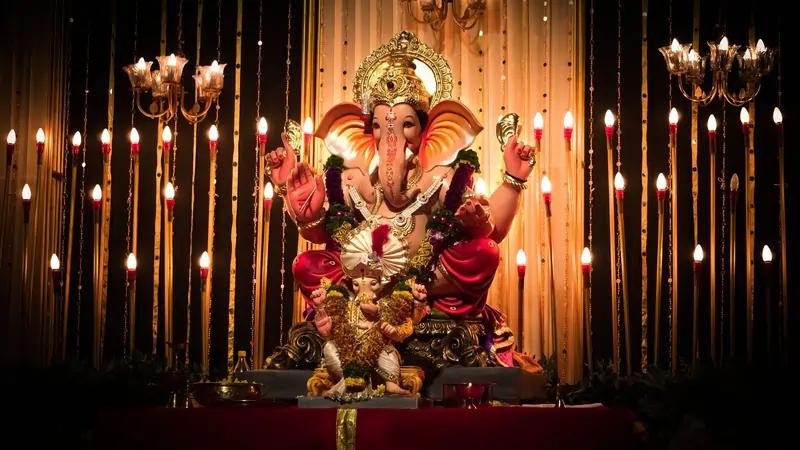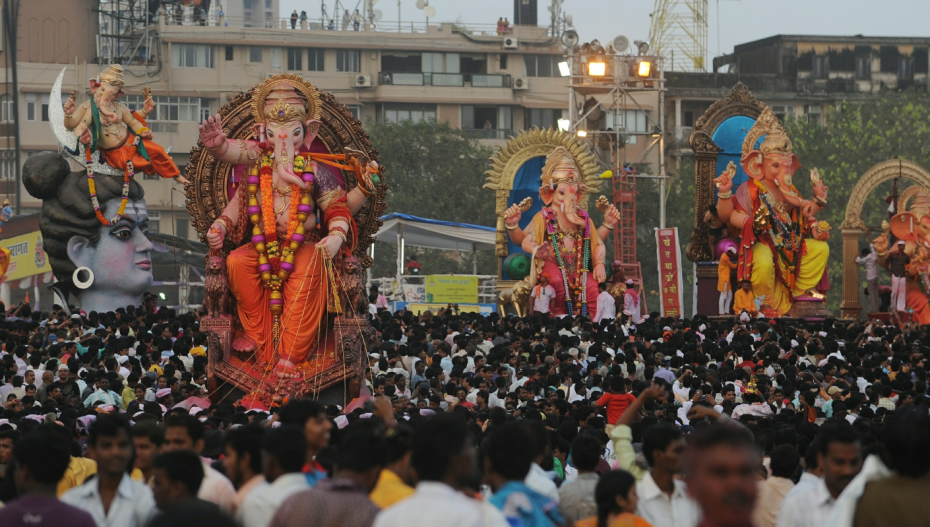Ganesh Chaturthi: The Festival of Lord Ganesha
Ganesh Chaturthi, also known as Vinayaka Chaturthi, is a widely celebrated Hindu festival that marks the birth of Lord Ganesha, the elephant-headed deity symbolizing wisdom, prosperity, and good fortune. Observed with immense enthusiasm, primarily in the Indian states of Maharashtra, Karnataka, Goa, and Gujarat, the festival is a time for joyous gatherings, prayers, and rituals.
Historical Significance
The origins of Ganesh Chaturthi can be traced back to the reign of Chhatrapati Shivaji Maharaj, who promoted it as a public festival to encourage a sense of unity and cultural pride. However, it was Lokmanya Bal Gangadhar Tilak who transformed it into a mass public event during India’s freedom struggle in the late 19th century. Tilak used the festival as a means to unite people against British colonial rule, bringing communities together to celebrate in public spaces.
Rituals and Traditions

Preparation and Idol Installation: The festival begins with the installation of beautifully crafted idols of Lord Ganesha in homes and public pandals (temporary structures). Families and communities decorate these spaces with vibrant flowers, lights, and rangoli (traditional art created using colored powders).
Prayers and Offerings: Special prayers (aartis) are performed daily during the festival, accompanied by offerings of modaks (sweet dumplings considered Lord Ganesha’s favorite), fruits, and flowers. Devotees chant hymns, sing devotional songs, and invoke the blessings of Ganesha to remove obstacles and bring prosperity.
Eco-Friendly Celebrations: In recent years, there has been a growing awareness about celebrating Ganesh Chaturthi in an eco-friendly manner. Idols made from clay or biodegradable materials are becoming more common, as they dissolve harmlessly in water, minimizing environmental pollution.

The Grand Procession and Visarjan
The festival concludes with a grand procession, where devotees carry the idol of Lord Ganesha to a nearby water body, such as a river, lake, or ocean, for immersion (Visarjan). Amidst the chants of "Ganpati Bappa Morya," people bid farewell to the deity, symbolizing his return to Mount Kailash, while seeking his return the following year.
Significance in Modern Times
Ganesh Chaturthi transcends religious boundaries and has become a symbol of cultural unity and social harmony. It brings families, friends, and entire communities together, reinforcing values of togetherness and devotion. In addition to its religious importance, the festival has also taken on a philanthropic aspect, with many pandals organizing blood donation drives, medical camps, and other social activities.
Conclusion
Ganesh Chaturthi is more than just a religious celebration; it is a reflection of India’s vibrant cultural fabric. The devotion, the joy, and the communal spirit that define this festival continue to inspire generations, keeping alive the rich traditions and the message of Lord Ganesha—remover of obstacles and harbinger of new beginnings.
